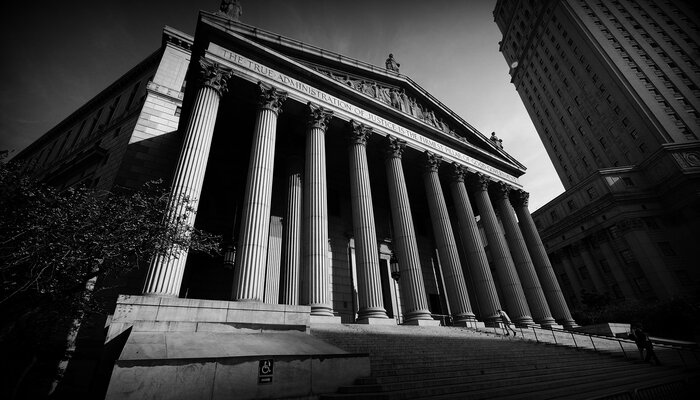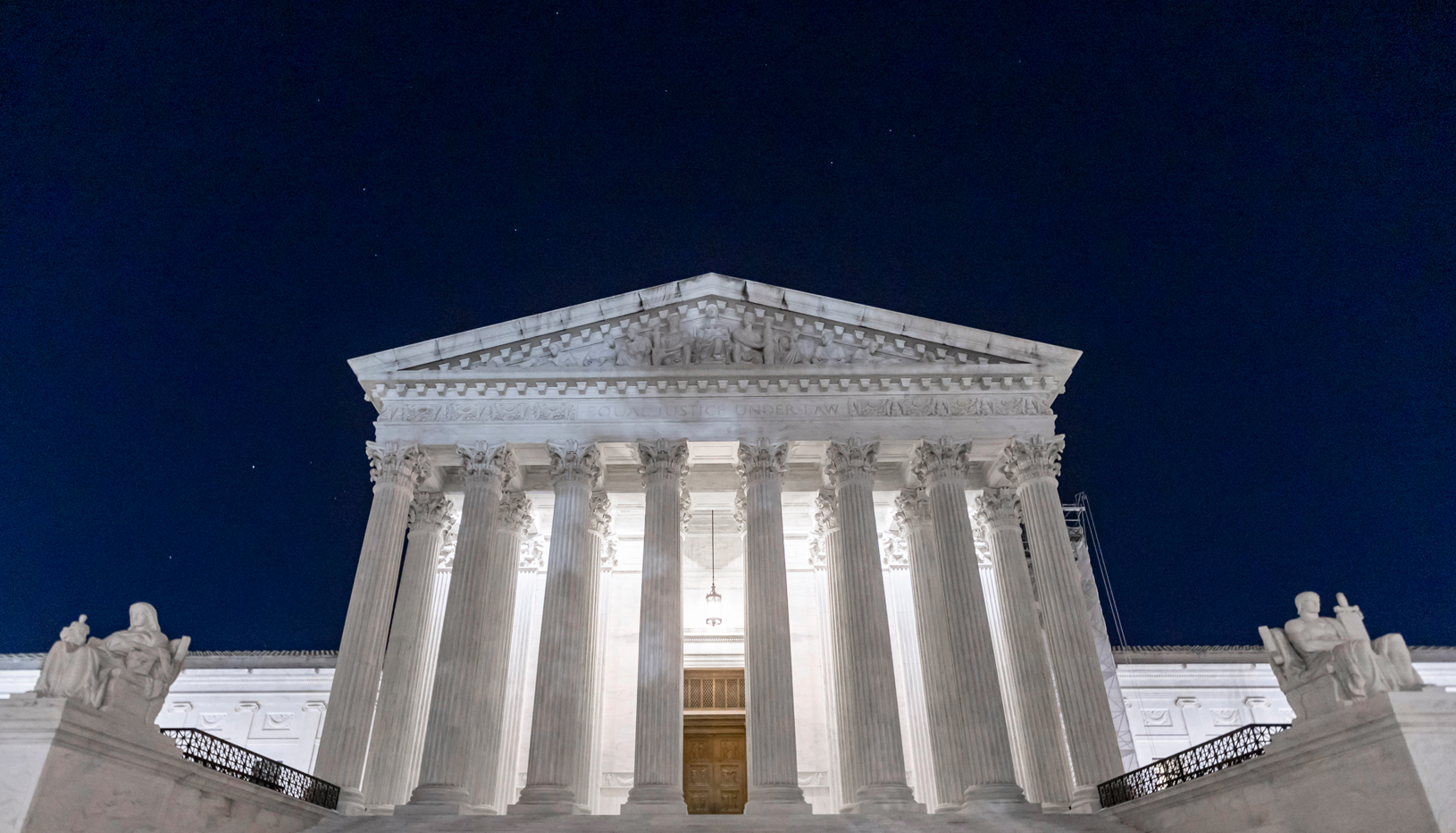In June 2022, the Supreme Court struck down Roe v. Wade, the nearly 50-year-old landmark ruling that the Constitution provides a right to an abortion. While the decision was stunning in its own right, many Court watchers say the justices signaled the death of Roe months earlier when they refused to block a Texas law prohibiting abortions starting at six weeks of pregnancy — a clear violation of Roe.
The decision in that case, Whole Woman’s Health v. Jackson, was shocking not only because it signaled a major change to the law but also in how the Court first addressed this issue: through a one-paragraph, unsigned opinion issued without any oral argument, on the Court’s “shadow docket.”
The ruling was one of the more controversial uses of the Supreme Court’s shadow docket, and it made clear that the justices were willing to use this previously obscure procedural mechanism in ways that their predecessors did not. For better or for worse, the shadow docket is now a significant part of Supreme Court jurisprudence.
What is the shadow docket?
Fundamentally, the shadow docket is where the Court rules on procedural matters, such as scheduling and issuing injunctions. But its role is changing, and the full story is more complex.
Supreme Court cases take one of two tracks: merits docket or shadow docket. Each term the Court decides some 60 to 70 cases on the merits docket. Before rendering a ruling in each one, the Court considers numerous briefs and holds oral argument. It then issues a decision with a lengthy opinion explaining its reasoning, often with concurrences and dissents.
The process supports both informed decision-making and transparency. Almost every Supreme Court case you can name — Brown v. Board of Education, Roe v. Wade, Citizens United v. Federal Election Commission — was decided on the merits docket.
Most orders from the shadow docket, such as due dates for briefs, have little importance to anyone beyond the litigating parties. However, other shadow docket matters, such as requests to halt a lower court’s orders, can have high stakes. The Court might, for example, reinstate a law after a lower court had stopped its implementation.
Cases on the shadow docket, in contrast to those on the merits docket, typically do not receive extensive briefing or a hearing. The decisions are accompanied by little to no explanation and often lack clarity on which justices are in the majority or minority. They are sometimes released in the middle of the night, creating a sense of palace intrigue.
Indeed, law professor Stephen I. Vladeck noted in testimony before Congress, “Owing to their unpredictable timing, their lack of transparency, and their usual inscrutability, these rulings come both literally and figuratively in the shadows.”
How has the use of the shadow docket changed in recent years?
Shadow docket cases are sometimes controversial, and the Court’s handling of these hot-button disputes has changed dramatically because of a confluence of events dating back to the 1980s. This change has transformed the shadow docket from an obscure procedural tool to a matter of public disagreement.
Through the 1970s, when a controversial case emerged on the shadow docket, the individual justice assigned to that part of the country took oral argument and issued a signed order explaining his reasoning, usually without the involvement of the other justices.
This process, incidentally, gave rise to one of the Court’s more bizarre stories, when in 1970 two lawyers hiked six miles into the woods to request that Justice William O. Douglas temporarily restrain Portland, Oregon policemen from using violent tactics to quell protests. Douglas held an impromptu oral argument and left his decision on a tree stump: application denied. Supreme Court rules now require that all shadow docket applications be submitted to the clerk’s office.
The Court’s treatment of the shadow docket began to evolve in the 1980s when the Court ceased to formally adjourn during the summer. With the Court technically in session at all times, even when the justices are not physically together, they can address sensitive shadow docket cases in unison, instead of in their individual capacities.
Two significant changes followed. First, once the justices began working collectively on the shadow docket, they stopped holding hearings. The reason for this is not altogether clear — there is nothing in law prohibiting oral argument in cases on the shadow docket, even when decided by all nine justices. Second — and this is a more recent change — the justices have begun to issue far more rulings, and more significant rulings, through the shadow docket. Today, the justices grant relief in contentious shadow docket cases twice as often as they did just a few years ago. The surge in issuing this relief has coincided with Justices Neil Gorsuch, Brett Kavanaugh, and Amy Coney Barrett joining the Court.
Put simply, the Court is making more significant decisions through the shadow docket while having reduced the robustness of the decision-making process.
What are some recent examples of how the Supreme Court has used the shadow docket?
The Court has used the shadow docket to rule on issues including gerrymandering, pandemic rules, environmental regulation, and (as described above) abortion. Many of its high profile uses of the shadow docket have involved so-called emergency motions, which often seek to suspend or reverse lower court orders while a case is still in progress. This is supposed to be a rare action, limited to situations in which the lower court rulings could cause irreparable harm if allowed to stand. Critics, however, argue that the Supreme Court is granting relief when the applicant has not truly demonstrated irreparable harm, effectively deciding cases at too early a stage in the litigation, and with a lack of transparency and participation from affected parties.
One frequently cited example is Roman Catholic Diocese of Brooklyn v. Cuomo, in which the justices struck down New York’s capacity restrictions on religious services due to Covid-19. The Supreme Court’s intervention reversing the lower courts that had allowed the restrictions to stand appeared particularly unusual since the attendance limits were no longer in effect and could not cause harm.
Another example came when the justices reinstated Alabama’s gerrymandered Congressional map after lower courts had ruled that the plan discriminated against Black voters in violation of the Voting Rights Act. The result is that those maps will be in effect for at least the 2022 election. Only two justices in the majority (Kavanaugh and Samuel Alito) provided any reasons for their decision.
Louisiana v. American Rivers was another controversial use of the shadow docket. In its waning days, the Trump administration issued a regulation preventing states from blocking infrastructure projects that could contaminate rivers, lakes, and streams. When a federal judge vacated the Trump rule and restored the states’ powers, the Supreme Court stepped in on behalf of fossil fuel interests, reinstating the administration’s rule without citing evidence or providing an explanation of how the lower court order threatened irreparable harm.
Chief Justice John Roberts, a conservative jurist, raised eyebrows when he joined the Supreme Court’s liberals in dissenting from that ruling. In that dissent, Justice Elena Kagan lamented that the Court had gone “astray,” rendering “the Court’s emergency docket not for emergencies at all.” Rather, the shadow docket had become “only another place for merits determinations — except made without full briefing and argument.”
Supreme Court Shadow Docket Tracker >>
Why is the Supreme Court’s current use of the shadow docket problematic?
Using the shadow docket for nonemergency but monumental decisions runs counter to the tenets of transparency and the rule of law. As many legal scholars have observed, the justices’ usual process of waiting for lower courts to establish facts and weigh in on cases, receiving full briefing, holding oral argument, and providing detailed explanations of their orders, is a key source of the Court’s legitimacy.
So, when the justices increasingly render decisions affecting more and more Americans in a manner that precipitously resolves constitutional or statutory questions with little to no reasoning given, they feed the perception that their rulings are predicated on political ideology rather than judicial principles.
These orders have also sown confusion among lower courts as to which shadow docket decisions count as precedent. The Court has sent mixed signals, suggesting that such decisions are of little precedential value, while also rebuking the Ninth Circuit Court of Appeals for not following four prior Supreme Court rulings involving California Covid-19 restrictions — all of which were shadow docket orders. Given this lack of clarity, judges on a federal appeals court in Virginia disagreed on what weight to give shadow docket decisions in cases involving a Trump immigration policy.
Pressure from the public and legal scholars who have criticized the Court’s recent use of the shadow docket may return the justices to a more traditional approach. Such a change would benefit the rule of law and the Supreme Court itself.






